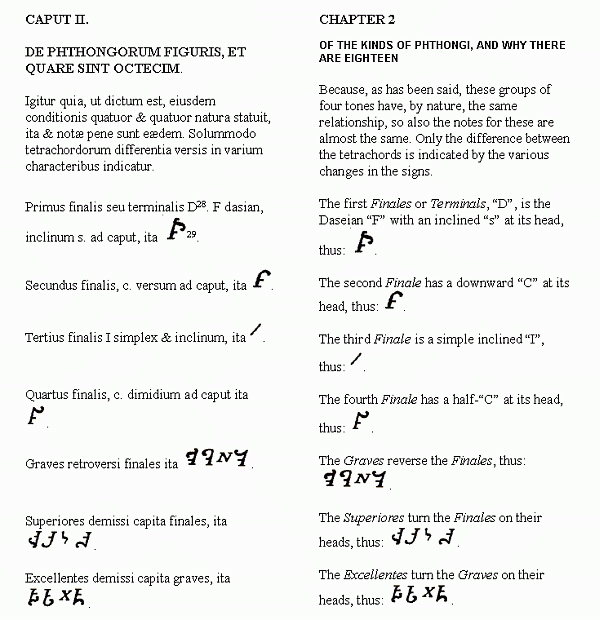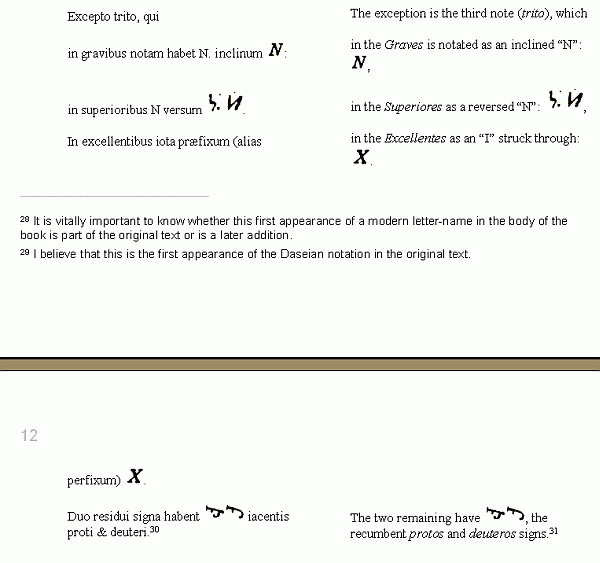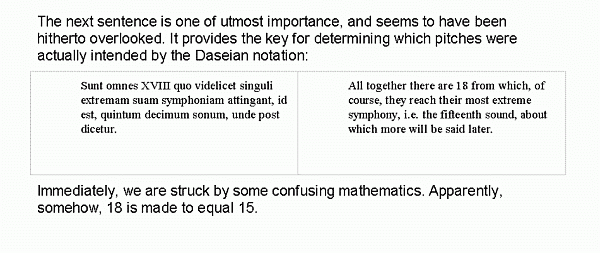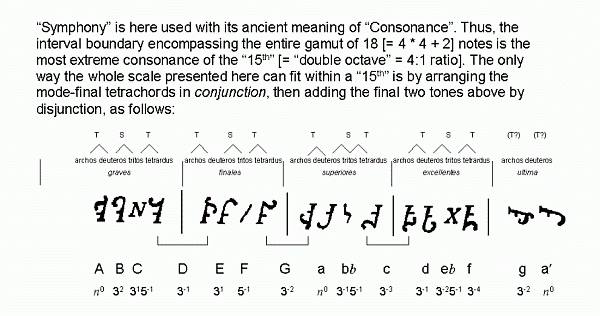daseian notation
A unique type of musical notation called "Daseian" was introduced in the musica enchiriadis and scolica enchiriadis treatises, written about 860 AD (according to Monzo) in the Carolingian Frankish Empire.
These treatises were written at a time when European music-theory was grappling with a way to notate pitch without using the complicated ancient Greek naming system. (For an example of the Greek names, see perfect immutable system.)
The beginning of the musica enchiriadis describes how there are 18 notes in the total gamut of pitches, and how these notes are arranged into four tetrachords (4 * 4 = 16) with two extra notes. The four tetrachords are named, in ascending order: graves, finales, superiores, and excellentes.
The following excerpts are taken from the unpublished paper Monzo 1996, A New Look at the musica enchiriadis:
From Chapter 2 of the musica enchiriadis (translation from the Latin by Joe Monzo):


The accepted interpretation views all four tetrachords as disjunct, with two further disjunct notes at the top, so that the entire gamut equates to our modern notes thus:
graves finales superiores excellentes
| | | |
G A Bb C D E F G A B C D E F# G A B C#
However, it is possible that the accepted interpretation of the daseian notation is incorrect, as other commentators have never reconciled the accepted interpretation with the following:

The point being made here is that the extreme notes in the commonly-accepted interpretation of the enchiriadis gamut do not form the concordant interval of the "15th" ("double-octave"), as the text clearly states they must -- indeed, G:C# is not considered to be a concord in any medieval music-theory, and the range G:C# in the accepted interpretation far exceeds the "double-octave", being an "octave" plus tritone. Thus, it is possible that the following conclusion instead must be reached:

Further references:
- John Opsopaus, Greek Esoteric Music Theory Charts
- Gabriella F. Scelta, The History and Evolution of the Musical Symbol
The tonalsoft.com website is almost entirely the work of one person: me, Joe Monzo. Please reward me for my knowledge and effort by choosing your preferred level of financial support. Thank you.
